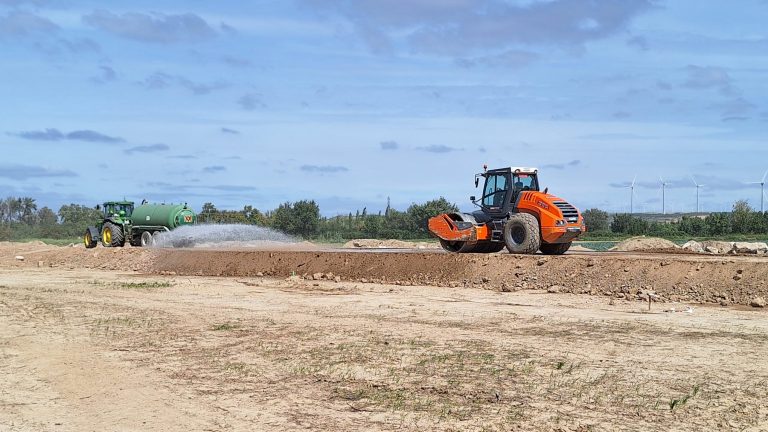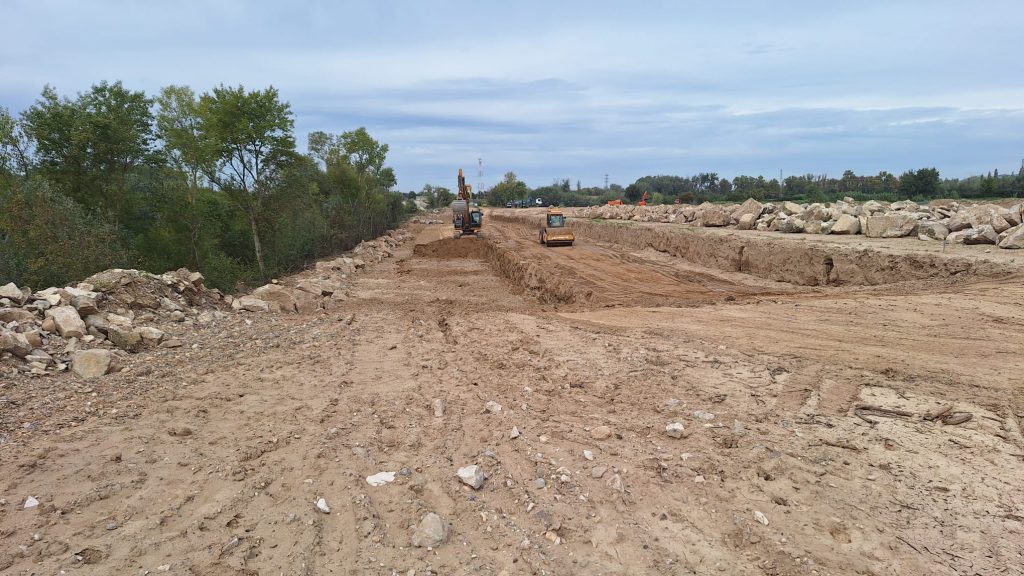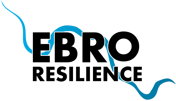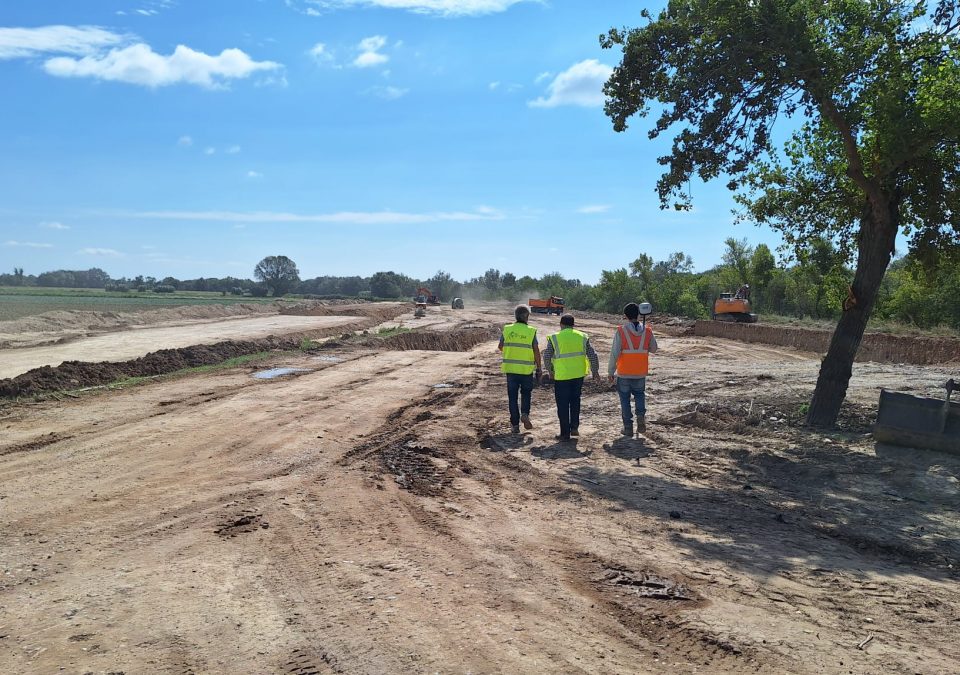Within the framework of the Ebro Resilience Strategy to reduce the risk of flooding in the middle stretch of the Ebro River, the Ebro Hydrographic Confederation (Ministry for Ecological Transition and Demographic Challenge – MITECO), a partner in this Strategy, is building a fish passage in the Ebro at El Bocal, Fontellas, Navarra, the point where the historical infrastructure of the Imperial Canal originates.
One of the works for this intervention, which can be seen in the pictures, also allows gaining river space, since a section of the current defense of the Ebro River in the municipality of Cabanillas (Navarra) is set back (away from the riverbed) just on the opposite bank of Fontellas.
The fish passage will be located between the new dam and the El Bocal hydroelectric plant, on the left bank of the river.
The main objective of the intervention is to improve the longitudinal continuity of the river, allowing the passage of fish through the two existing dams in El Bocal, which will result in the general improvement of the ecological state of the section, responding to the philosophy of the Strategy in all the actions that have been proposed for the middle section of the Ebro River.
The 2 million euro work, financed by the MITECO budget, began in July 2024 and will be carried out during the dry season.
The intervention will consist of the construction of a naturalized channel on the left bank of the Ebro.
This naturalized channel or artificial river will be 850 m long and will be used to overcome the obstacles to fish migration posed by the Carlos V and Pignatelli dams in the Bocal del Canal Imperial.
The canal, which will have several resting areas for fish and aquatic fauna, will have to overcome a drop of almost 10 m, with a gradient of less than 2 %.
In the space left between the old bank defense and the new recessed one, in addition to accommodating the fish passage, it will be reforested.
The intervention complies with the criteria of the European Water Framework Directive and the Public Hydraulic Domain Regulations, which state that respect for the longitudinal and lateral continuity of watercourses must be promoted.
Environmental actions
Ebro Resilience carries out other actions for river restoration, such as, for example, the elimination of invasive exotic flora species, such as the common reed, in specific areas where their presence causes degradation of the river environment.
Along with the new fish passage at El Bocal, another passage over the Pina weir is also under construction.
This weir is located on the Ebro river, between the municipalities of Nuez de Ebro and El Burgo de Ebro, in Zaragoza.

Ebro Resilience
The Ebro Resilience Strategy involves the Ministry for Ecological Transition and the Demographic Challenge, the Ebro Hydrographic Confederation and the Autonomous Communities of La Rioja, Navarre and Aragon. The approach for all sections is to protect urban areas for floods with a return period of 25 years and for non-urban areas, to reduce the impact of floods up to a return period of 10 years.
The keys to Ebro Resilience are coordination and new approaches to reduce the negative impact of flooding episodes, focusing on combined measures to improve the resilience of the territory.
The Strategy includes the LIFE Ebro Resilience P1 Project (LIFE20 ENV/ES/00327), approved by the European Commission in the LIFE 2020 call.
This project covers three autonomous communities (La Rioja, Navarra and Aragón), has a duration of 6 years and a total budget of 13,310,350 €, with 55% European funding.


